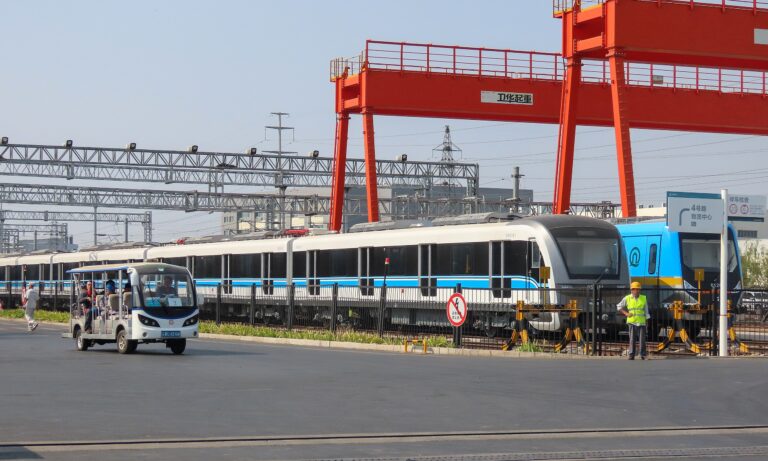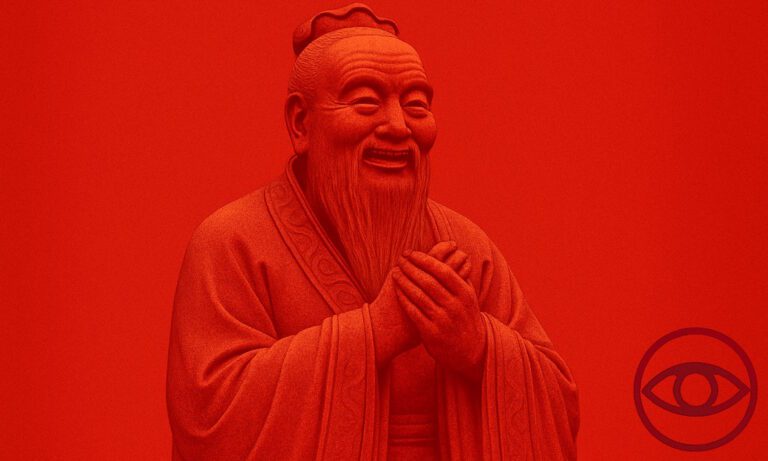
The time between the Chinese Communist Party Congress in October last year and the beginning of the new term of the National People’s Congress in March may seem like a political off-season. However, this transitional period between the selection of the Party leadership and the new State Council is filled with the reshuffle of numerous vital posts, including in the provincial leadership teams. These personal moves can say a lot about the dynamics of power within the party.
Looking into the provinces is essential because they are breeding grounds for future party and state leaders. Jiang Zemin, Hu Jintao, and Xi Jinping, CCP’s consecutive general secretaries since 1989, all had previous experience in leading localities. In fact, in the last three decades, most members of the Political Bureau Standing Committee (PBSC), the crucial inner circle of power in China, had worked as party secretaries or governors/chairpersons/mayors at the provincial level before ascending to the party echelon. Out of the 35 people who entered this elite body, 25 led at least one province. This trend became even more apparent after 2007 when 15 of 18 new members of PBSC had this experience. In other words, it is worth surveying provincial leaders if one wants to know who will get to the top of the CCP in a couple of years.
China has 33 provincial-level units, including 22 provinces, five autonomous regions, four municipalities, and two special administrative regions (SAR) – Hong Kong and Macau (setting aside the issue of Taiwan, claimed by Beijing as the 23rd province). Apart from SARs, all other administrative units are governed by CCP party committees. The most important person in every provincial-level unit (from here in short: province) is its party secretary.
Until the late 1980s, provincial party secretaries had relatively limited influence in Beijing. They were rarely selected for the Politburo, which was dominated by the heads of central party departments and members of the State Council (central government).
However, since 1987, several posts of provincial party secretaries have had virtually assured seats in the Politburo. First, it was the party secretaries of Beijing and Shanghai (in 1987), then of Guangdong (1992), Tianjin and Xinjiang (2002), and Chongqing (2007). Since 2007, typically the party head in these localities has concurrently sat in the Politburo, except for some rearrangements due to dismissal after corruption cases or falling out of grace. In 2021, these six localities consisted of 17 percent of the total population of China and generated about 23 percent of the national GDP.
New and Old Faces in the Politburo
Among the six party secretaries of provincial committees in the current Politburo, four are newcomers: Ma Xingrui, who heads Xinjiang; Yuan Jiajun in Chongqing; Chen Jining in Shanghai and Yin Li in Beijing.
Ma and Yuan spent most of their careers in the aerospace industry. Between 2007 and 2013, Ma was the CEO of China Aerospace Science and Technology Corporation, while Yuan worked as one of his deputies. After that, they were transferred to the provinces to get some governing experience. Ma Xingrui landed in Guangdong, while Yuan Jiajun first spent two years in the poorly developed Ningxia, only to later move to vibrant Zhejiang.
Another Politburo newcomer, Chen Jining, worked at Qinghua University before 2015 in an administrative capacity. Then he was nominated as minister of environmental protection and two years later, appointed a mayor of Beijing. As a newly minted party secretary of Shanghai, Chen now appears to be a contender for the PBSC at the next party congress in 2027.
Finally, Yin Li, the new party secretary of Beijing, worked in the State Council for most of his career, especially in the Ministry of Health. In 2015 he was transferred to Sichuan and then to Fujian to serve as the party secretary (2020-2022).
What unites all the newcomers is that they were parachuted in the last several years into the provinces to serve at a high level after a few decades of experience in other sectors.
The other two provincial party secretaries have already held a seat in the Politburo before, with their appointments reshuffled after the Congress. Chen Min’er was selected as the new head of the Tianjin party committee, while Huang Kunming became the new chief of Guangdong.
Contrary to the newcomers, both Chen and Huang have extensive experience in the provinces. Chen started his career as a low-ranking bureaucrat in Shaoxing prefecture in Zhejiang. After three decades of moving up in local administration, he was transferred to Guizhou to work as governor (2012-2015) and party secretary (2015-2017). Then he was appointed party chief in Chongqing, replacing Sun Zhengcai, one of the top officials who had fallen in Xi Jinping’s anti-corruption campaign.
The Fujian-born Huang began his political work in the late 1970s in his home province’s Longyan prefecture. In 1999 he was transferred to neighboring Zhejiang, where he continued his slow advance in local bureaucracy. However, in 2013 he was made a deputy head of the Central Propaganda Department, moving to lead it in 2017. Huang’s appointment as Guangdong party secretary thus means his return to provincial politics.
All Xi’s Men?
Chen Min’er and Huang Kunming have something else in common. They are both considered close associates of Xi Jinping due to their long-time work with him.
Chen Min’er was the director of the Propaganda Department in Zhejiang while Xi ran the province. To some extent, he was responsible for shaping the image of the current general secretary before he was picked as a successor to Hu Jintao in 2007 and transferred to the party center in Beijing.
Huang Kunming may have met Xi Jinping already during his time in the Fujian province, where the current general secretary developed his career between 1985 and 2002. When Xi took over the reins in China, Huang was brought to Beijing to work in the Central Propaganda Department and ensure Xi’s positive image across all the media.
However, both Chen and Huang failed to secure a promotion to PBSC at the 20th CCPs Party Congress. Their transfers were horizontal, not vertical, in terms of advancement in the party hierarchy. Moreover, while Huang was transferred from a central organ of the CCP to the most populous and biggest provincial economy, Chen merely swapped one municipality for another, a less populous and almost twice smaller in terms of GDP. This looks almost like a soft demotion for Chen, who had once been touted as potential Xi’s successor.
Because of the strong belief among observers about Xi’s dominance within the party, some may argue that the Politburo is filled with his protégés. However, while Chen and Huang are known as Xi’s men, the newcomers have never had direct working relations with him. One might argue that their indirect connection is enough to consider them part of the Xi Jinping faction. For instance, Yin Li worked in Fujian, Xi’s power base. Moreover, he met several times publicly with his wife at health promotion events. Yuan Jiajun also worked in the province known as a breeding ground for Xi’s protégés. Ma Xingrui and Chen Jining, on the other hand, were subordinates of Xi’s close allies.
However, we can not overlook that the CCP is a highly networked party. There are only a few degrees of separation between the elite members of the party which mean that almost anyone from the Central Committee can be indirectly linked to one of the top leaders. Therefore, a mere personal connection is often too little to determine one’s faction. Additionally, a few well-known associates of the general secretary did not make it into the Politburo at the 20th Congress, including Chen Yixin (minister of state security) and Ying Yong (deputy prosecutor-general of the Supreme People’s Procuratorate).
Limits of Power?
Overall, Xi Jinping achieved a lot during the 20th Party Congress. He stacked up the seven-men PBSC with his protégés and allies, marginalized the influence of other factions, and kept back any potential successors. Nevertheless, Xi still cannot pick single-handedly every high-level cadre straight out of his inner circle.
This is not to argue that the newcomers will form some opposition faction against the general secretary. It is hard to imagine their recent promotion without the approval of Xi himself, so he probably perceives them as loyal. However, it will be more difficult for him to impose his will on those who advanced in the party outside of his closest network of associates.
Considering the changes in the COVID-19 policy, Xi’s current five-year term did not start well. We can only speculate to what extent the sudden shift was forced by provincial authorities, who financed the “dynamic COVID-zero” policy. Having looked at the local budgets, the new secretaries may have concluded that this policy was financially unsustainable and therefore lobbied for a change. It was easier for them than for previous leaders, who were vying for promotion during the 20th Party Congress and probably did not want to argue with the general secretary about his signature policy.
The next five years thus seem to be especially interesting for observing the relations between the central government and provinces. These dynamics may provide clues and evidence about the limits of Xi’s power, even as he begins his norm-breaking third term at the helm of the party.
Written by
Adrian Brona
AdrianBronaAdrian Brona, PhD, is a Lecturer at the Institute of Middle and Far East, Faculty of International and Political Studies of Jagiellonian University. He researches Chinese politics and foreign relations.


